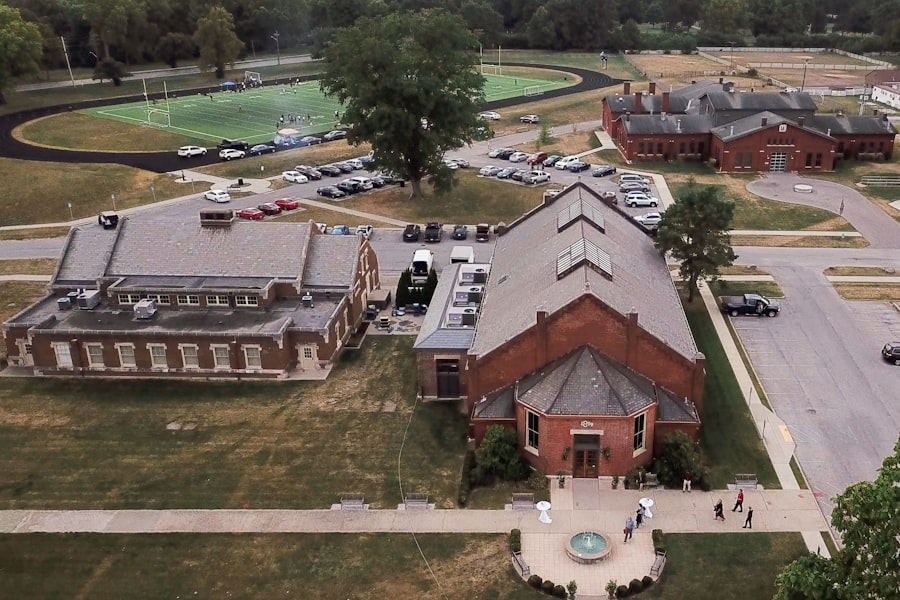Skylights are windows that are installed in the roof of a building to allow natural light to enter the space below. They are a popular choice for homeowners who want to increase the amount of natural light in their homes and enjoy the benefits that come with it. Natural roof lighting has numerous advantages, including increased energy efficiency, improved mood and productivity, cost savings on electricity bills, enhanced visual appeal, health benefits, increased home value, reduced carbon footprint, and year-round use.
Key Takeaways
- Skylights provide natural roof lighting, which can increase energy efficiency and improve mood and productivity.
- Natural light can lead to cost savings on electricity bills and enhance the visual appeal and aesthetics of a home.
- Exposure to natural light can also have health benefits and increase the value of a home.
- Skylights can help reduce a home’s carbon footprint and can be used year-round.
- When choosing a skylight, it’s important to consider factors such as size, placement, and energy efficiency.
Increased Energy Efficiency with Skylights
One of the main benefits of skylights is their ability to reduce energy consumption. By allowing natural light to enter a space, skylights can help reduce the need for artificial lighting during the day. This can result in significant energy savings, especially in areas where electricity rates are high. Additionally, skylights can also provide passive solar heating during the winter months, reducing the need for artificial heating and further decreasing energy consumption.
There are different types of skylights that offer energy efficiency. For example, tubular skylights are small, cylindrical skylights that use reflective tubes to capture and distribute natural light throughout a space. They are highly efficient and can provide ample lighting even in rooms without direct access to the roof. Another option is double-glazed skylights, which have two layers of glass with an insulating layer in between. This design helps to reduce heat transfer and improve thermal insulation, making them more energy-efficient than single-glazed skylights.
Improved Mood and Productivity with Natural Light
Natural light has a significant impact on mood and productivity. Studies have shown that exposure to natural light can improve mood, reduce stress levels, and increase overall well-being. It has also been found to enhance cognitive function and productivity, making it beneficial for both home and work environments.
Research has shown that employees who have access to natural light in the workplace are more satisfied with their jobs and experience less fatigue and eye strain. In a home setting, natural light can create a more inviting and comfortable atmosphere, making it a more pleasant place to live. It can also improve concentration and focus, making it easier to complete tasks and be productive.
Cost Savings on Electricity Bills
One of the most tangible benefits of skylights is the cost savings on electricity bills. By reducing the need for artificial lighting during the day, skylights can help homeowners save money on their monthly electricity bills. The amount of savings will depend on various factors, such as the size and number of skylights, the location of the home, and the cost of electricity in the area.
In addition to reducing lighting costs, skylights can also help reduce heating and cooling costs. During the winter months, skylights can provide passive solar heating, reducing the need for artificial heating. Conversely, during the summer months, skylights can be equipped with shades or blinds to prevent excessive heat gain and reduce the need for air conditioning.
Enhanced Visual Appeal and Aesthetics
Skylights not only offer practical benefits but also enhance the visual appeal and aesthetics of a home. They can bring in natural light that illuminates the space below, creating a bright and airy atmosphere. This can make rooms feel larger and more open, adding to the overall appeal of the home.
There are different types of skylights that offer visual appeal. For example, fixed skylights are stationary windows that provide a clear view of the sky above. They can be installed in various shapes and sizes, allowing homeowners to customize their design based on their preferences. Another option is vented skylights, which can be opened to allow fresh air into a space. These skylights not only provide natural light but also offer ventilation, making them a popular choice for bathrooms and kitchens.
Health Benefits of Natural Light

In addition to improving mood and productivity, natural light also has several health benefits. Exposure to natural light has been linked to improved sleep quality, as it helps regulate the body’s internal clock and promotes the production of melatonin, a hormone that regulates sleep-wake cycles.
Natural light also provides the body with vitamin D, which is essential for bone health and immune function. Spending time in natural light can help prevent vitamin D deficiency, which has been associated with various health issues, including weakened immune system, bone loss, and increased risk of certain diseases.
Increased Home Value with Skylights
Skylights can increase the value of a home by enhancing its overall appeal and functionality. The addition of skylights can make a home more attractive to potential buyers, as they offer the benefits of natural light and improved aesthetics. Homes with skylights are often perceived as more desirable and may sell at a higher price compared to similar homes without skylights.
The value increase will depend on various factors, such as the location of the home, the quality of the skylights, and the overall design and condition of the property. It is important to choose high-quality skylights that are properly installed to maximize their impact on home value.
Reduced Carbon Footprint with Natural Lighting
Another important benefit of natural lighting is its positive impact on the environment. By reducing the need for artificial lighting during the day, skylights can help reduce carbon emissions associated with electricity generation. This can contribute to a lower carbon footprint and help mitigate climate change.
Skylights also have the potential to reduce the need for artificial heating and cooling, further decreasing energy consumption and carbon emissions. By utilizing passive solar heating during the winter months and shading techniques during the summer months, homeowners can reduce their reliance on fossil fuels for heating and cooling purposes.
Year-Round Use of Skylights
Skylights can be used throughout the year, providing natural light and other benefits in all seasons. During the winter months, skylights can help bring in additional sunlight and warmth, reducing the need for artificial lighting and heating. In the summer months, skylights can be equipped with shades or blinds to prevent excessive heat gain and provide a comfortable indoor environment.
There are different types of skylights that offer year-round use. For example, operable skylights can be opened to allow fresh air into a space during the warmer months. This can help improve indoor air quality and provide natural ventilation, reducing the need for air conditioning. Additionally, skylights with built-in rain sensors can automatically close when it starts to rain, ensuring that the interior of the home remains dry and protected.
Choosing the Right Skylight for Your Home
When choosing a skylight for your home, there are several factors to consider. First, consider the size and location of the skylight. The size should be proportionate to the room and allow for sufficient natural light without overwhelming the space. The location should be carefully chosen to maximize sunlight exposure and minimize heat gain or loss.
Next, consider the type of skylight that best suits your needs. Fixed skylights are a popular choice for bringing in natural light and enhancing aesthetics. Vented skylights offer additional ventilation and are ideal for bathrooms and kitchens. Tubular skylights are a good option for rooms without direct access to the roof, as they can capture and distribute natural light effectively.
Lastly, consider the quality and energy efficiency of the skylight. Look for skylights that are made from high-quality materials and have good insulation properties. Double-glazed skylights with low-emissivity coatings are a good choice for energy efficiency, as they provide better thermal insulation and reduce heat transfer.
Skylights and natural roof lighting offer numerous benefits for homeowners. They can increase energy efficiency, improve mood and productivity, save on electricity bills, enhance visual appeal, provide health benefits, increase home value, reduce carbon footprint, and offer year-round use. When choosing a skylight for your home, consider factors such as size, location, type, and energy efficiency to maximize the benefits and enjoyment of natural light. With all these advantages in mind, it is clear that skylights are a worthwhile investment for any homeowner looking to improve their living space.
If you’re considering installing skylights for natural roof lighting, you may also be interested in learning about the benefits of rain gutters. Rain gutters play a crucial role in protecting your roof and home from water damage by directing rainwater away from the foundation. To find out more about the importance of rain gutters and how they can enhance the longevity of your roof, check out this informative article on sanpedroroofers.com.
FAQs
What are skylights?
Skylights are windows installed on the roof of a building to allow natural light to enter the interior space.
What are the benefits of skylights?
Skylights provide natural light, which can improve mood, productivity, and overall well-being. They can also reduce energy costs by decreasing the need for artificial lighting during the day.
What types of skylights are available?
There are several types of skylights available, including fixed, vented, tubular, and domed. Fixed skylights do not open, while vented skylights can be opened to allow for ventilation. Tubular skylights are smaller and designed for smaller spaces, while domed skylights are often used in commercial buildings.
What materials are skylights made of?
Skylights can be made of various materials, including glass, acrylic, and polycarbonate. Glass skylights are the most common and offer the best clarity, while acrylic and polycarbonate skylights are more durable and shatter-resistant.
What factors should be considered when installing skylights?
When installing skylights, factors such as the orientation of the building, the size and placement of the skylight, and the type of glazing used should be considered. It is also important to ensure proper installation to prevent leaks and other issues.
